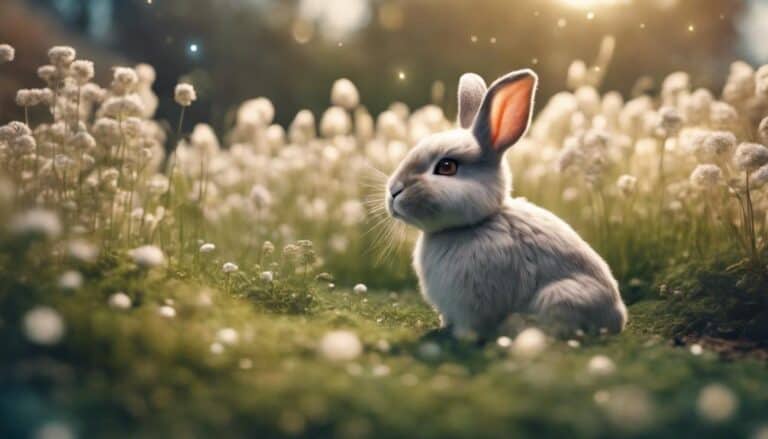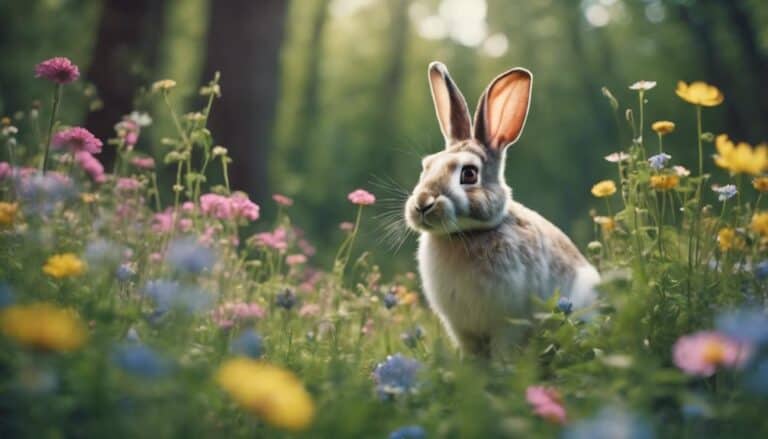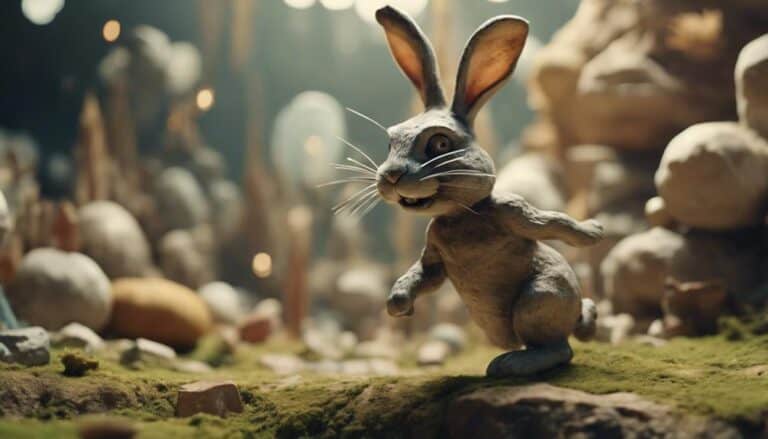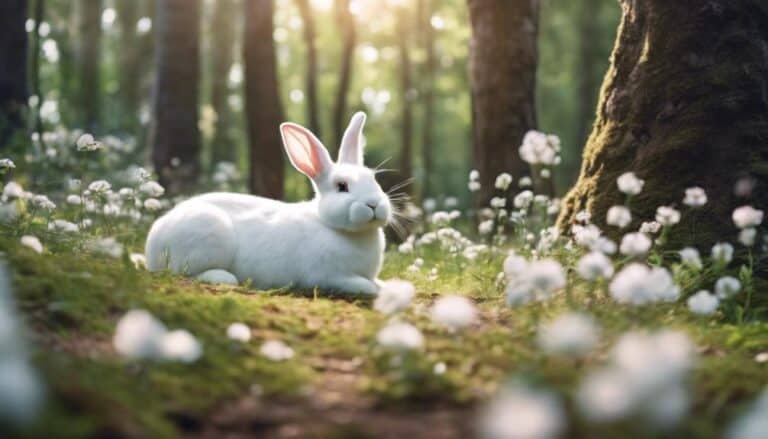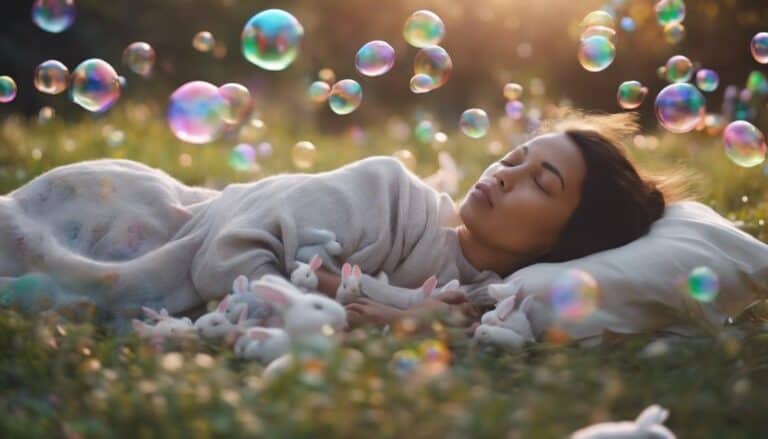So, you think rabbits are just cute, fluffy creatures hopping around in fields? Think again.
In the domain of art history, these furry beings have assumed roles that might surprise you. From their symbolic significance in religious art to their influence on modern artistic movements, rabbits have left an indelible mark that goes beyond their adorable exterior.
Curious to uncover the depths of their impact? Let's explore the 5 key roles that rabbits have played in shaping art history.
Contents
Key Takeaways
- Rabbits symbolize fertility, rebirth, and trickery in art across cultures and traditions.
- Rabbit motifs represent good luck, protection, and the cycle of life in folk art.
- Contemporary artists use rabbits to address social issues and provoke thought on consumerism.
- Rabbits influence creativity in movements like Surrealism and Pop Art, reflecting diverse cultural interpretations.
Symbolism in Religious Art
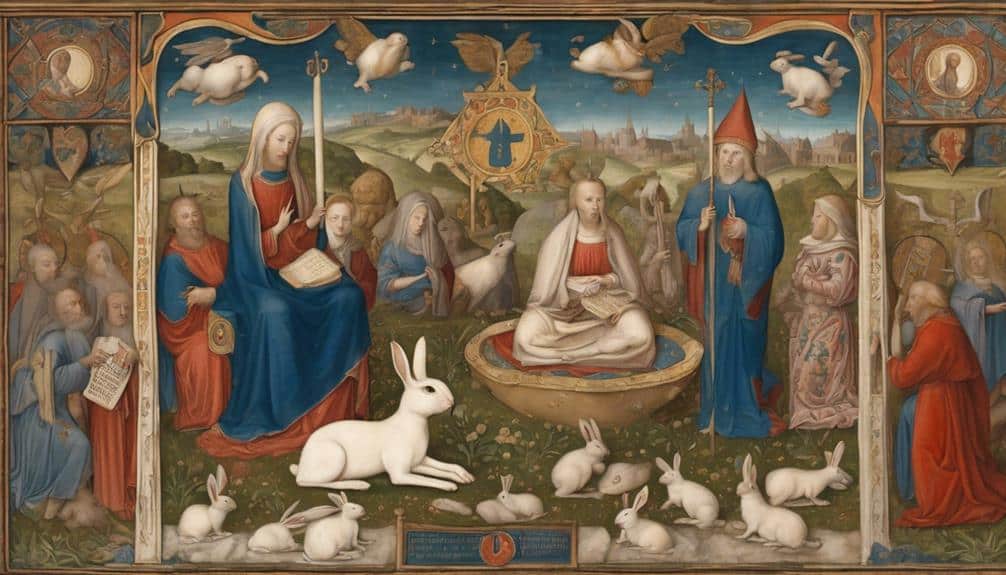
Rabbits play a significant symbolic role in religious art, representing various themes such as fertility, rebirth, agility, protection, and cleverness across different cultural and spiritual traditions.
In Christian art, rabbits symbolize fertility, mirroring the concepts of abundance and new life.
On the other hand, pagan traditions associate hares with rebirth, depicting them as symbols of renewal and growth.
In Buddhist art, rabbits are emblematic of agility and quick thinking, highlighting their nimbleness and intelligence.
Islamic art sometimes portrays hares as symbols of protection and good luck, invoking a sense of security and positive fortune.
Hindu art showcases rabbits as creatures embodying cleverness and resourcefulness, emphasizing their ability to navigate challenges with ingenuity.
Through these diverse representations, rabbits and hares in religious art serve as powerful symbols, enriching the visual narratives with layers of meaning and cultural significance.
Representation in Mythological Stories
How do mythological stories across cultures depict the symbolic significance of rabbits?
Rabbits and hares feature prominently in mythological narratives worldwide, embodying various symbolic meanings.
In Native American and Central African mythologies, rabbits are often portrayed as trickster figures, using their cunningness to outsmart others.
Conversely, in Asian and Aztec cultures, rabbits symbolize rebirth and regeneration, as seen in the Rabbit in the Moon legend.
The diverse roles that rabbits play in folklore highlight themes of fertility, agility, and cleverness, reflecting different cultural beliefs.
These mythological stories underscore the significance of rabbits as symbolic animals with multifaceted interpretations across various traditions.
Whether representing abundance, regeneration, or trickery, rabbits serve as potent symbols that resonate with cultural values and beliefs, enriching mythologies with their presence and contributing to the tapestry of symbolic animals found in stories from around the world.
Influence on Folk Art Traditions
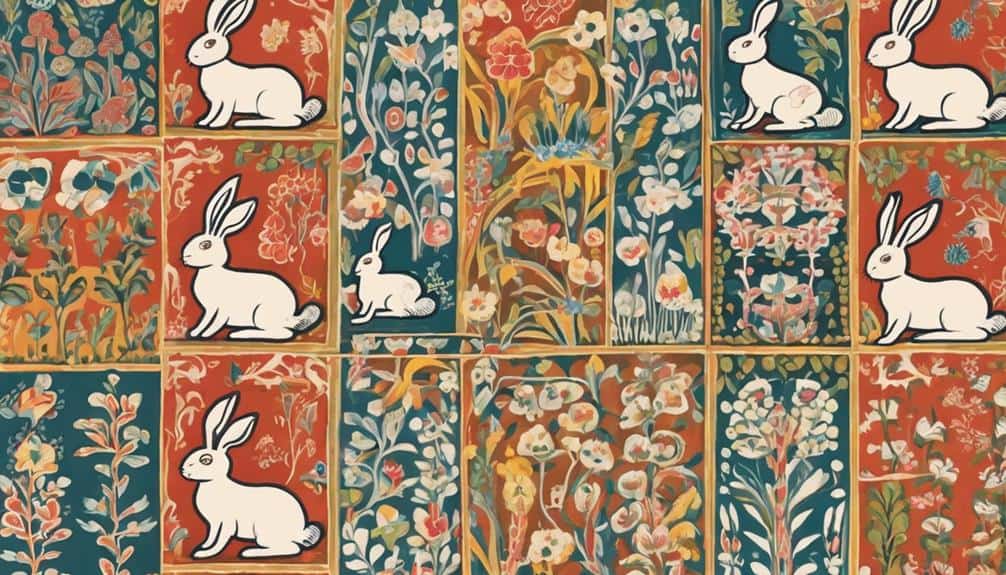
The enduring presence of rabbits in folk art traditions worldwide underscores their symbolic importance in representing themes of fertility, abundance, and protection in cultural expressions.
Folk artists have long utilized rabbit motifs in various art forms such as textiles, pottery, and paintings to symbolize good luck, prosperity, and the renewal of life. In African and Native American folk art, rabbits are often portrayed as trickster figures, embodying qualities of wit and cunning while also symbolizing resilience and cultural significance.
The depiction of rabbits in folk art reflects deep-rooted beliefs and traditions related to nature, folklore, and the interconnectedness of life. These symbolic representations highlight the rabbit's association with luck, prosperity, and the ability to overcome challenges, making them powerful symbols of protection and renewal. Through their presence in folk art traditions, rabbits continue to serve as potent symbols of fertility, abundance, and the enduring cycle of life and nature.
Depictions in Modern and Contemporary Art
Exploring the domain of modern and contemporary art reveals a diverse and intriguing array of depictions featuring rabbits and hares, shedding light on their evolving symbolic roles in artistic expressions.
In contemporary art, the Getty Museum showcases rabbits as a symbol of fertility in various artworks, emphasizing their deep-rooted significance across cultures. Artists like Ai Weiwei challenge traditional perceptions by using rabbits to address political and social issues, infusing new layers of meaning into their representation.
Additionally, the whimsical illustrations of Beatrix Potter and the iconic rabbit character by John Tenniel in 'Alice's Adventures in Wonderland' continue to captivate audiences, showcasing rabbits' versatility in artistic narratives.
Moreover, the use of rabbits for food and fur in modern artworks raises questions about consumerism and ethics, prompting viewers to contemplate the intersection of nature and culture.
As art historians explore these contemporary rabbit depictions, museums like the Museum of Art serve as platforms for exploring the evolving symbolism of rabbits in the modern world.
Impact on Artistic Movements
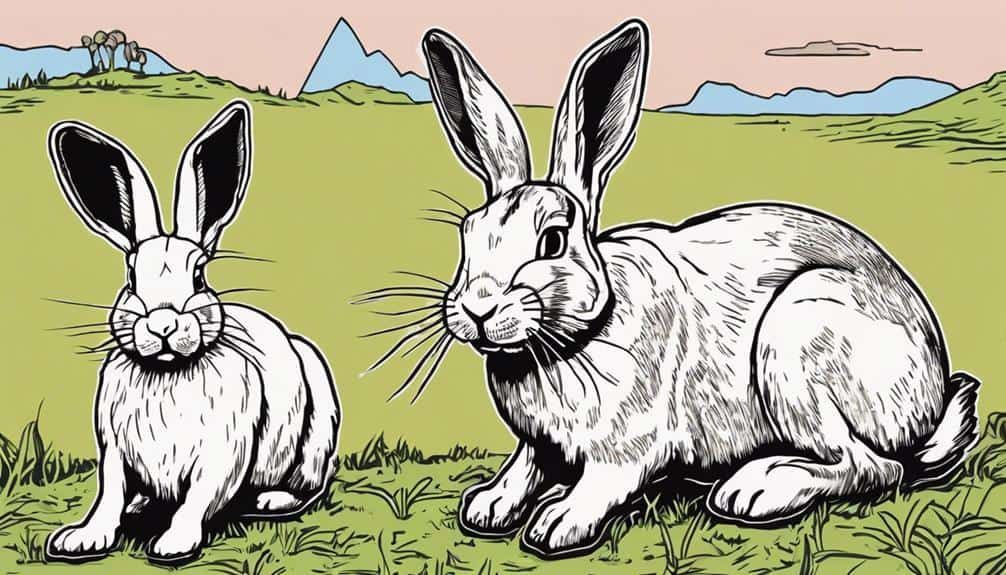
Artistic movements throughout history have been greatly influenced by the symbolic presence of rabbits, serving as catalysts for creativity and innovation in various forms of artistic expression. The hare, with its rich symbolism and versatility, has left a profound mark on diverse art movements.
In Surrealism, artists like Salvador Dalí incorporated rabbit characters to evoke a sense of mystery and dreamlike surrealism, as seen in works like 'Dream Caused by the Flight of a Bee Around a Pomegranate a Second Before Awakening.' Pop Art embraced the rabbit motif, as exemplified by Andy Warhol's iconic bunny images that captured the essence of popular culture.
Installation art has also been impacted by rabbits, with artists such as Pipilotti Rist using rabbit symbolism to create immersive and fantastical experiences. These artistic expressions highlight how rabbits have evolved as powerful symbols, reflecting changing cultural narratives and inspiring artists to explore new domains of creativity within various artistic movements.
Frequently Asked Questions
What Do Rabbits Represent in Art?
In art, rabbits symbolize a plethora of meanings. Their presence signifies fertility, rebirth, and abundance. Artists use rabbits to convey diverse interpretations, drawing upon cultural, religious, and mystical symbolism. Deciphering these meanings enriches artistic inspiration.
What Significance Do Rabbits Have?
Rabbits hold rich symbolic meaning in art, inspiring artists through mythological connections, psychological interpretations, and folklore origins. Their spiritual symbolism, historical context, and diverse artistic expressions showcase the enduring significance of rabbits in artistic endeavors.
What Was the Purpose of Rabbits?
In art, rabbits symbolized fertility, rebirth, and desire. Artists drew inspiration from cultural beliefs, portraying rabbits as iconic imagery with interpretive meanings. Their presence in art conveyed aesthetic appeal and allegorical symbols, reflecting historical context and diverse cultural interpretations.
What Is the Cultural Significance of the Rabbit?
The rabbit holds deep cultural significance, embodying symbolic meanings of rebirth and protection. Folklore tales, spiritual connections, and historical interpretations depict rabbits as iconic motifs in art, inspiring artists with their aesthetic appeal and mythical allure.
Conclusion
As you reflect on the rich history of rabbits in art, consider this: did you know that rabbits have been depicted in over 5000 artworks throughout history? This staggering statistic not only showcases the enduring fascination with these creatures but also highlights their profound impact on artistic expression.
From religious symbolism to modern interpretations, rabbits continue to captivate artists and audiences alike, serving as timeless symbols of fertility, rebirth, and dynamic in the ever-evolving landscape of art.


